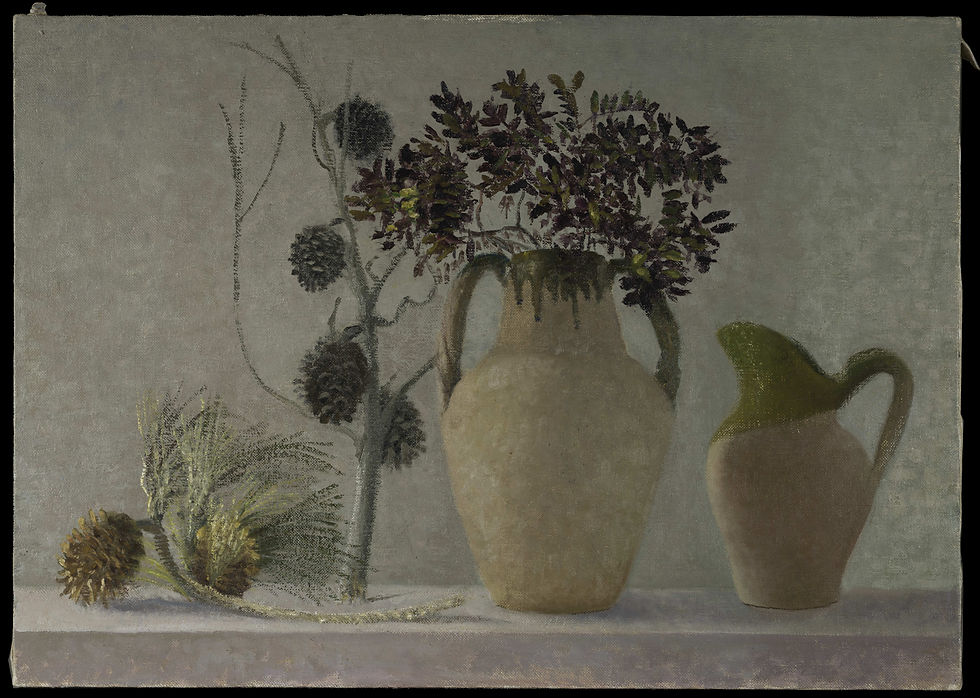Flavia Arlotta: Inner Gardens. September 13th December 18th.
- associazione68
- Sep 10
- 2 min read

A reserved artist, perhaps even a little secretive, Flavia Arlotta spent her long life in a large, welcoming house, always open to friends — where art and everyday life were woven together with grace, balance, and quiet intensity. Alongside her husband, Giovanni Colacicchi, she cultivated a deep and affectionate dialogue, in which painting was born of shared reflection and a reality observed with love. From him she learned technique and a sense of composition, but she developed her own distinct voice: feminine, original, shaped by slow, patient, and deeply felt maturity.
In her early work, one can sense the closeness to Onofrio Martinelli, a close friend, and later to Emanuele Cavalli; yet her artistic identity soon emerges with clarity. As their son Francesco Colacicchi recalls, “You can tell my father's painting is by a man, and my mother's is by a woman — and that's how it should be, because both transferred into their work their own humanity”, their vivid, curious, and sensitive inner worlds.

Flavia Arlotta’s world appears as a vibrant combination of interwoven threads: the family podere with its olive trees and orchard marked by the seasons; the house and studios full of light and the presence of familyand friends. All of this is reflected in her paintings, where life is quietly magnified in stillness and anticipation. Family photographs, travel sketchbooks, paintings, and beloved objects tell the story of this deeply felt connection between life and art — luminous and seemingly effortless
This exhibition at Il Palmerino offers a rare glimpse into her inner landscape: affectionate portraits, meditative landscapes, still lifes of great intensity. Her gaze captures the hidden light within objects and preserves it on canvas. Alongside the paintings, sketchbooks trace the steps of a discreet and fertile imagination, moments of time reclaimed from daily obligations, yet firmly rooted in life. The numerous representations, sometimes quick and only hinted at, in some cases more insistent and meditative, capture the first images that appear before her eyes, the first ideas that come to mind and that are retained and monitored, patiently brought to fruition. Family photos and objects she held dear contribute to defining the harmonious image of the artist and her universe.
As Piero Calamandrei once wrote about Tuscany:“This is a land where it seems that even objects, through long civilization, have gained the gift of simplicity and measure. The very same qualities that distinguish both the life and the work of Flavia Arlotta.




Comments